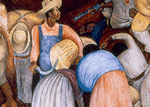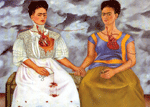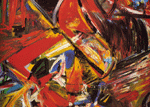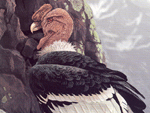Homework #10 20th Century Latin American Humanities |
Q1. |
On the "Notes on the Humanities of the Mexican Revolution" page, you will find paragraphs about novelists and the works of theirs that focus on this event (study the events in Mexico from 1910 to 1920 on the link). Pick one of the novels mentioned on this page in the 2461 online textbook, and tell why, if you were forced to choose one of them, you would choose to read a novel by that particular Mexican novelist. Be specific. |
|
Q2. |
Identify this building and the humanities creator of the murals that cover it. Answer the four HUM 2461 Humanities Questions embedded in Juan O'Gorman #7.
|
|
Q3. |
Identify this art work and the humanities artist who created it. Answer the HUM 2461 questions (A) and (B) only embedded in Diego River #10.
|
|
Q4. |
Answer the HUM 2461 questions (C) and (D) only embedded in Diego River #10. |
|
Q5. |
Identify this rather disturbing painting and its creator. (A) Describe its most important features of content and style.
|
|
Q6. |
Define vanguardismo and Magical Realism (lo real maravilloso) according to the discussions of these two 20th century Latin American literary (humanities) movements in the HUM 2461 online textbook as listed on the Key Terms page. |
|
Q7. |
Compare and contrast the pictures and comments in Amazon #3 and Opening Slide Show #15. (A) How are they similar? (B) How are they different? (C) What do they have to do with Latin American humanities? |
|
Q8. |
Compare and contrast the pictures and comments in the following three HUM2461 images: Manaus #12, Rio de Janeiro #21, and Buenos Aires #8. (A) What do they have in common? (B) In what ways are they different? (C) What do they tell us about Latin American humanities? |
|
Q9. |
Respond to the Humanities Homework Project mentioned in the Brazil Art #6 page referring to the following painting:
|
|
Q10. |
||
Q11. |
Referring specifically to passages in the HUM 2461 20th century literature notes about Pablo Neruda, cite three ideas mentioned in that brief essay that illustrate in what way Neruda is a very representative poet of the vanguardista period in Latin American humanities. |
|
Q12. |
In Canto VI in Neruda's monumental poem Heights of Machu Picchu, in what way do you see the reality of (the ruins of) Machu Picchu in the images in this canto? How can we understand the relationship between Machu Picchu's stones and "gentle hurricanes" in this canto's last two lines? |
|
Q13. |
In Canto VIII in the Heights of Machu Picchu, when the poet invites the reader—to whom he refers as "American love"—to come up with him, to what is the beloved reader (this American lover, we the readers) being invited in the rest of this particular Canto? How do you interpret the last two lines of this Canto? |
|
Q14. |
In the instructor's online notes to the Heights of Machu Picchu (find the link in the online chronology of Pablo Neruda) you will find a brief outline of this work's twelve cantos, and you will find a reference to Neruda's tour of the ruins, when a journalist reported a brief conversation with the poet. (A) Give you own summary of the brief conversation by citing specific passages in the whole poem that illustrate aspects you find in the cited conversation. |
|
Q15. |
In Canto XI in the Heights of Machu Picchu, when the poet sees the condor, what all is the poet seeing? What is the relationship between the image of the condor and the final line, "rise and be born with me, my brother" (tr. WTL)? Think about the image of the condor in Machu Picchu #21 and in this image in the small essay on Neruda: |








